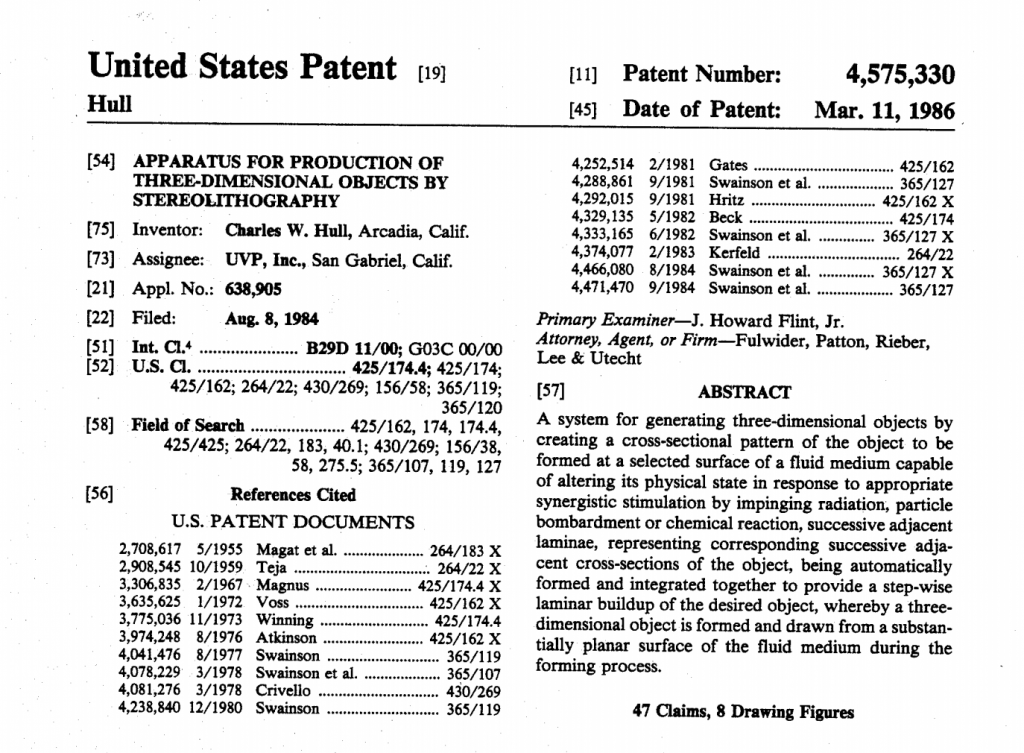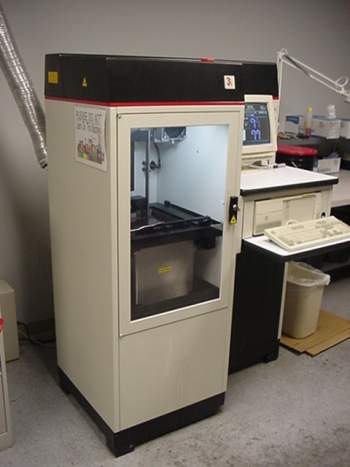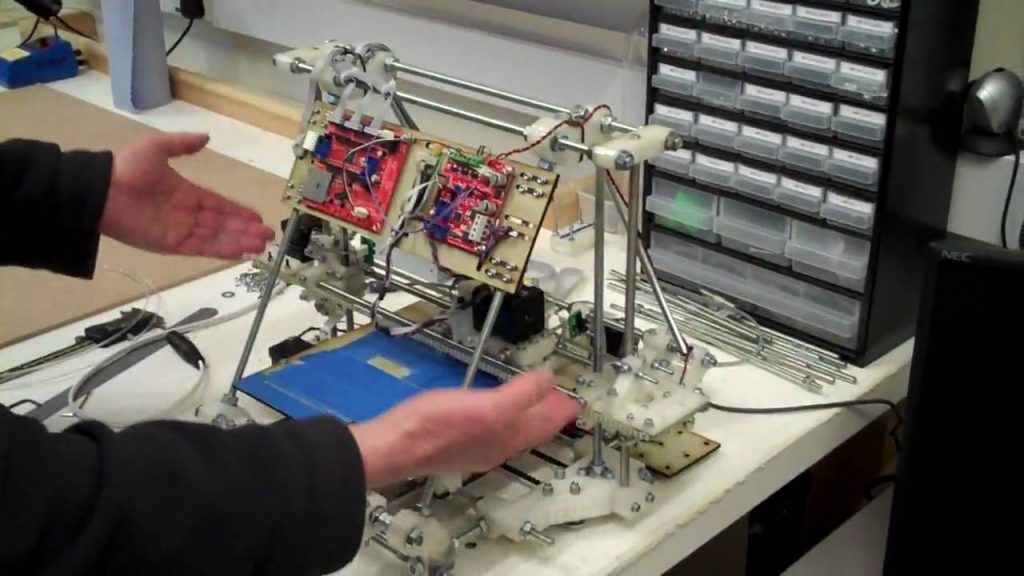Most people think that 3D printers came about by surprise and suddenly became popular.
Far from it, the history of 3D printing dates back to the moment immediately following the invention of the inkjet printer in 1976. And even to the year 1800, if we consider certain innovations in the field of sculpture as forerunners of 3D printing.
Experimentation with technology has never ceased and since the appearance of the first 2D printers, it has been clear that the next step was to be able to print physical objects, beyond drawing them on paper.
In this article you will learn the most interesting parts of this story and the most important milestones that 3D printers have reached along the way until becoming one of the technologies that are revolutionizing the world for its many applications in multiple fields.
The invention of stereolithography
The study of inkjet printers and their evolution bore its first fruits in 1984, when Charles Hull (who would eventually become one of the industry’s leading figures by co-founding 3D Systems), brought to light the concept of stereolithography (also known as SLA) and turned the market upside down.
This is Charles Hull’s famous patent US4575330A, which led to the 3D printing revolution and changed manufacturing forever:

This is the technique that makes it possible to create a 3D object from digital data (nothing but zeros and ones). In other words, it makes it possible to create a 3D model from a simple image.
It was revolutionary since it was now possible to test and see how the printed object would look in a very approximate way, without having to spend time, resources and materials on testing.
Do you think 3D printers have changed much since 1984? Not at all! Here you can see the diagrams presented by Charles Hull in his original patent and what a Form 2 stereolithography printer looks like today. The resemblance is striking:

In addition, the STL file format was born, which today is the most used by all 3D printing software.
Already in the 1980s other researchers were making popular alternative methods, such as Beaman and Deckard and their selective laser sintering, or the company Stratasys, which patented molten deposition modeling and a decade later acquired the Polyjet Photopolymer technology.
The first commercial 3D printing machines
In 1992, and with the help of 3D Systems, the first SLA or stereolithographic printers appeared on the market.
Although with imperfections, it was already possible to create an object layer by layer, with a three-dimensional shape.

An ultraviolet ray solidified a type of photopolymer (viscous liquid) and thus built the object, superimposing layers on top of others according to the 3D design submitted.
One of these machines, working “alone” for an entire night, could have a rather complex piece ready the next morning.
Expansion and diversification of 3D printing
3D printing had been given the starting shot and was being experimented with in all sorts of areas.
In 1999 it was already being used in medicine. In particular, a synthetic coating (from the patient’s own cells) could be used to implement solutions to problems in certain organs, such as a bladder.
In 2002 it was possible to print a fully functional kidney in 3D. However, it was a miniature kidney that could perform functions suitable for an animal. Nevertheless, this advance took the research and development of these types of solutions to another level, creating a new category: Regenerative Medicine.
Open Source 3D printing
In 2005, the wet dream of this technology’s lovers became possible: The RepRap (Replicating Rapid-Prototypers) initiative was born.

That is, an open source project (which the community likes so much) to build a 3D printing machine capable of printing most of its own components.
The big milestone was to democratize access to the very expensive replication technology. With this project it would be possible to afford the investment if one wanted to experiment with layer printing using ABS, PLA filaments, etc.
In 2006, the first SLS (selective laser synthesis) machine was available; basically, materials could be melted during the printing process. And with this it was already possible to start thinking about the manufacture of prostheses and industrial parts made from various materials.
The machine that prints itself (almost) completely
In 2008, RepRap materialized the 3D self-replication project by manufacturing a printer that could print almost all of its own components. It was already possible to obtain parts for repairs from the machine itself or for the construction of more printers. They called it “Darwin“.
The 3D printer phenomenon and its applications
From 2008, the use of 3D printers skyrocketed.
Communities and printing services are born, which allow any professional in any field to benefit from the printing of 3D objects for a low price: designers, architects, artists, craftsmen…
The first complex prosthesis that does not need assembly is printed, emulating a leg from the knee to the foot, allowing a person to walk with it.
‘Do it Yourself’ kits and bio-printing
In 2009, packs to build your own 3D printer are already circulating in the market at reasonable prices and, what is better, they are also open source.
But this pales in comparison to 3D bio-printers, with which it was already possible to print a blood vessel, albeit with proprietary technology.
The leap to the mass and consumer market
In 2011, 3D printing is applied in all types of industries and reaches the highest levels to date in research and large-scale production and consumption.

This is how news such as the construction of a functional aircraft (not for commercial use) of more than 7,000 euros appears in full print. Or an ecological car (in terms of materials) with a cost of between 12,000 and 60,000 euros that was cast aside when the electric model prevailed.
Even jewelry is printed in gold and silver, allowing for lower costs in terms of processing in the jewelry market.
In 2012, a completely customized jaw prosthesis is printed, and almost every year since then, there have been surprising developments in this field.
A revolution comparable to that of alternative energies
Today, 3D printing is an established technology in the market, but it is still at a very early stage and has enormous potential.
You can think of printing prototypes of anything, such as parts, components or designs.
You can use different materials with different properties (such as waterproofing), different colours, or employ certain techniques, such as lasers, which are in increasing demand.
It is not unreasonable to think that the movement that began as a “simple” method of photographic capture from different angles to be able to sculpt a masterpiece, has ended up becoming one of the best allies to improve our quality of life in a future that is already here.
If you want to try your first project with 3D printing you can send us a message and we will give you a quote in less than 24 hours.

